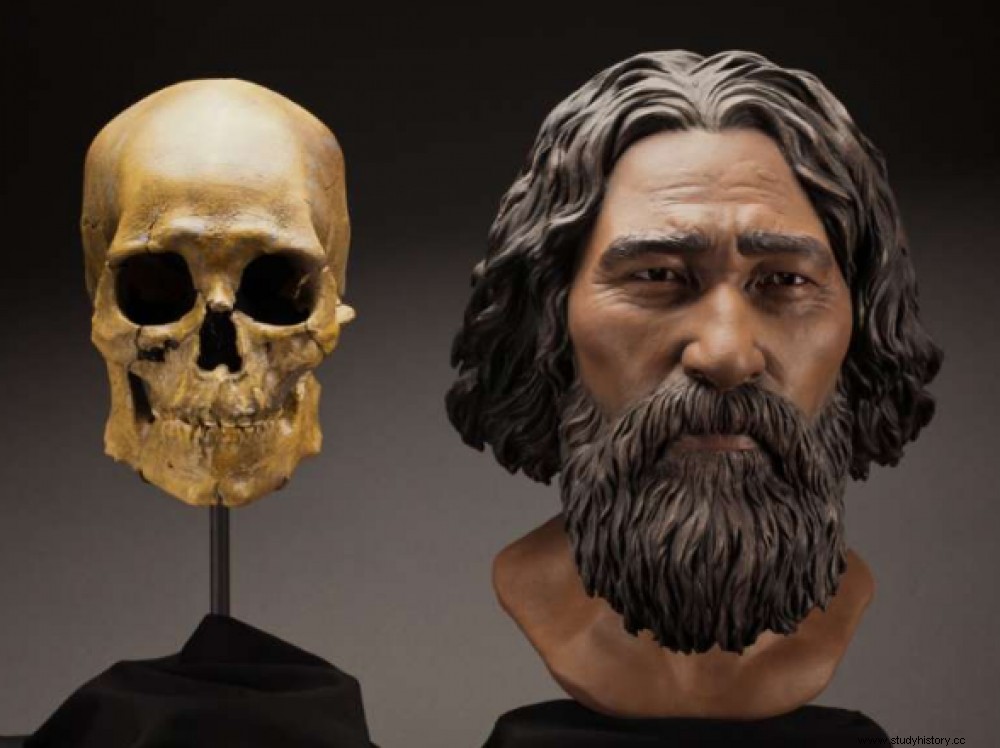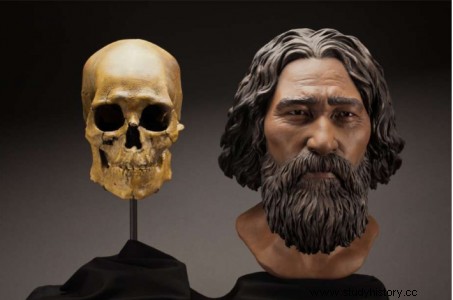After 20 years of litigation, the remains of Kennewick Man, an 8,400-year-old skeleton, were returned to Native Americans who immediately buried him in an undisclosed location in the United States.

Kennewick Man's skull, and a rendition.
CEREMONY. The "Elder" has just found the land of his ancestors... After 20 years of legal battles, the 8,400-year-old skeleton claimed from anthropologists by five Indian nations, was "reburied" on Saturday, February 18, 2017. The burial of this "Man from Kennewick" took place at an undisclosed location near the Columbia River in Washington State in the northwest United States. The same place where he had been accidentally discovered by two young walkers in 1996. Religious and tribal leaders were among the 200 people who came to pay their last respects to this ancestor, buried according to sacred rites. "This is a great day and our peoples have come to honor our ancestor" , said Arman Minthorn, of the Umatilla Tribal Council, quoted by the online daily Tri-City Herald . The representatives of the five Nations ( Umatilla, Yakama, Nez Percé, Colville and Wanapum) who had been demanding the return of the remains of this body for two decades, had been received the day before the ceremony at the Burke Museum of Natural History in Seattle, Washington. They were welcomed there by representatives of the US Army Corps of Engineers , of the Department of Archeology and History, which legally preserved the skeleton. The body was then officially handed over to them.

The skull of Kennewick Man, and a rendering. ©Brittney Tatcgell
It was the sequencing of the Kennewick man's genome in 2015 that resolved the conflict. The results have indeed ruled out all the Caucasian characteristics that had been attributed to him until then, and made it possible to establish kinship links with the current indigenous populations. These conclusive results, carried out by an international team led by Eske Willerslev, paleogeneticist at the GeoGenetics Center of the Natural History Museum of Denmark, were then published in the journal Nature . What we had mentioned at the time in Sciences et Avenir. A decree signed by former President Barack Obama on December 19, 2016 then authorized the return of the skeleton to the coalition of tribes who claimed it after anthropologists were able to carry out a complete study. A law passed in 1990, the Native American Graves Protection and Repatriation Act (Nagpra) protects Amerindian burials by requiring researchers to return to the indigenous populations all the testimonies they encounter related to their history. It is enough for this that the burial is more than 500 years old and that a direct cultural link is proven with the applicant. So Kennewick Man now rests on the path of peace.
